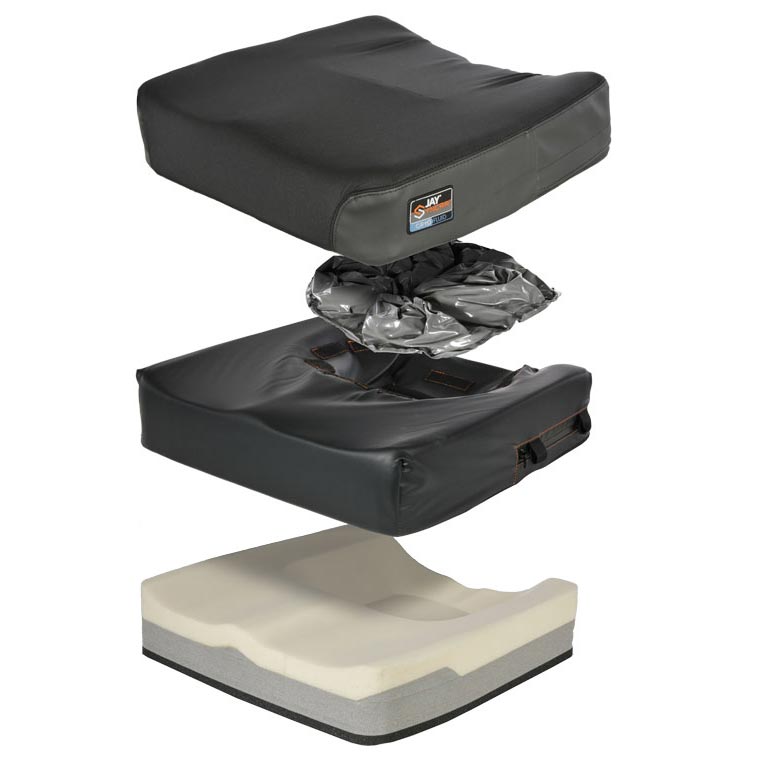Partilhar:
Take it offline!
This Education in Motion resource is also available as a printable PDF.
Descarregar PDF
Pigs have a similar skin structure to ours.
Sometimes they are part of research, such as in an experiment at Tohoku University where hairless pigs with dry skin were the recipients of a range of medicated moisturizers1. Their contributions don't always end in buttery soft skin; it's easy to find online debate among tattoo artists on the merits of synthetic practice sheets versus actual porcine dermal samples, complete with guidance on building a relationship with one's local butcher.
Due to this harmony with our own anatomy, pigs have also been part of investigations into human skin breakdown risk factors.
In a study at the University of Minnesota on the impact of temperature, porcine participants were given 100mmHG of mechanical pressure to six identically sized areas2. The only variable was the temperature of each site. At 25° C (77° F) the study concluded there was no significant damage. At 45° C (113° F), the difference was dramatic, described as "full thickness cutaneous and deep tissue injury."
Skin Microclimate
Increased skin temperatures usually appear with increases in moisture levels as well due to sweating. Therefore, these two factors are often approached together in the discussion about decubitus ulcer risk factors and termed "microclimate"3.
It's easily imagined. In warm temperatures, a few hours' road trip can turn typically imperciptible jeans into a trap of sharp, damp wrinkles uncomfortable enough to make us feel relieved for the next services stop, even if the cold drinks are three times the cost locally.
This happens because the limited air flow is insufficient to dissipate the heat from the driver's body, where it is pressed against an insulating foam car seat. There is reduced opportunity for sweat to evaporate once it forms, creating a mini-atmosphere of increased temperature and humidity. This contrast with other parts of the body exposed to the same ambient air temperature, such as the arms, where there is more effective cooling from airflow.
Clients Most at Risk
Clients who use wheelchairs for mobility typically need to sit for long periods daily. This means that those of us in a clinical role to support wheelchair users need to be aware of the potential negative impacts of microclimate in seating.
Underlying conditions can themselves create additional physiological risk factors that reduce the ability to manage microclimate. For example, continence management problems exacerbate skin moisture levels due to urine exposure. Clients with spinal cord injuries above the T6 level have an impairment in neuronal pathways to and from the hypothalamus that help regulate body temperature4.
People who require highly supported seating systems and have an impaired ability to shift away from seating surfaces may have more difficulty with air flow than other wheelchair users. This can particularly include those close fitting modular, custom moulded and tilt-in-space systems.
For example: as a young therapist I moulded a client for his first carved foam seat. Despite a complex kyphoscoliotic posture and congenital neuromuscular condition, he has been using a basic folding wheelchair (or bed) for all his seating prior to this. Once he received the seat he could sit for far longer without pain, eating was easier, and his family was happy with his much-improved ability to engage...until summer came.
This was contract therapy in a desert climate, and they were one of the very few families without air conditioning. He could not tolerate the new seat at all, preferring his mechanically dodgy folding chair with almost no support, and who could blame him? Lesson learned.

What could have been an alternative? In his case, microclimate was a significant factor, and would have been worse some support compromises. Some potential options would include:
- Molding the back only and allowing less aggressive contouring
- Ventilation holes in the mold
- An alternative molding material
- 3-D Microclimatic covers plus ventilation holes in the foam
- Use of a modular cushion like the JAY GS with inserts and base modifications to accommodate pelvic position with more airflow between the back and seat cushion
- Most importantly: an honest discussion with the family about compromises and microclimate risk factors inherent in a more supportive seating system, with collaboration on what could be done in his routine and environment to support comfortable seating
Pressure and Increased Skin Temperature
A Swedish study suggests the act of sitting itself is associated with elevation in skin temperatures5. Results showed a mean temperature increase of 2.7° C compared to the unloaded side. Authors sought to control the experiment, so this was not due to the insulation of the seating, rather the decreased ability of the compressed tissues to dissipate core body heat.
Skin and underlying tissues at higher temperatures also often have greater metabolic demands6. That is, at elevated temperatures, the tissues have a greater need for blood flow, and therefore can be even more vulnerable to pressure-related reduced circulation than cooler tissues.
So What Now?
All of this is to say that microclimate is a key consideration in providing equipment for people with complex seating and mobility needs. Next month's Education in Motion blog will feature assessment implications and how to prescribe equipment with microclimate in mind.